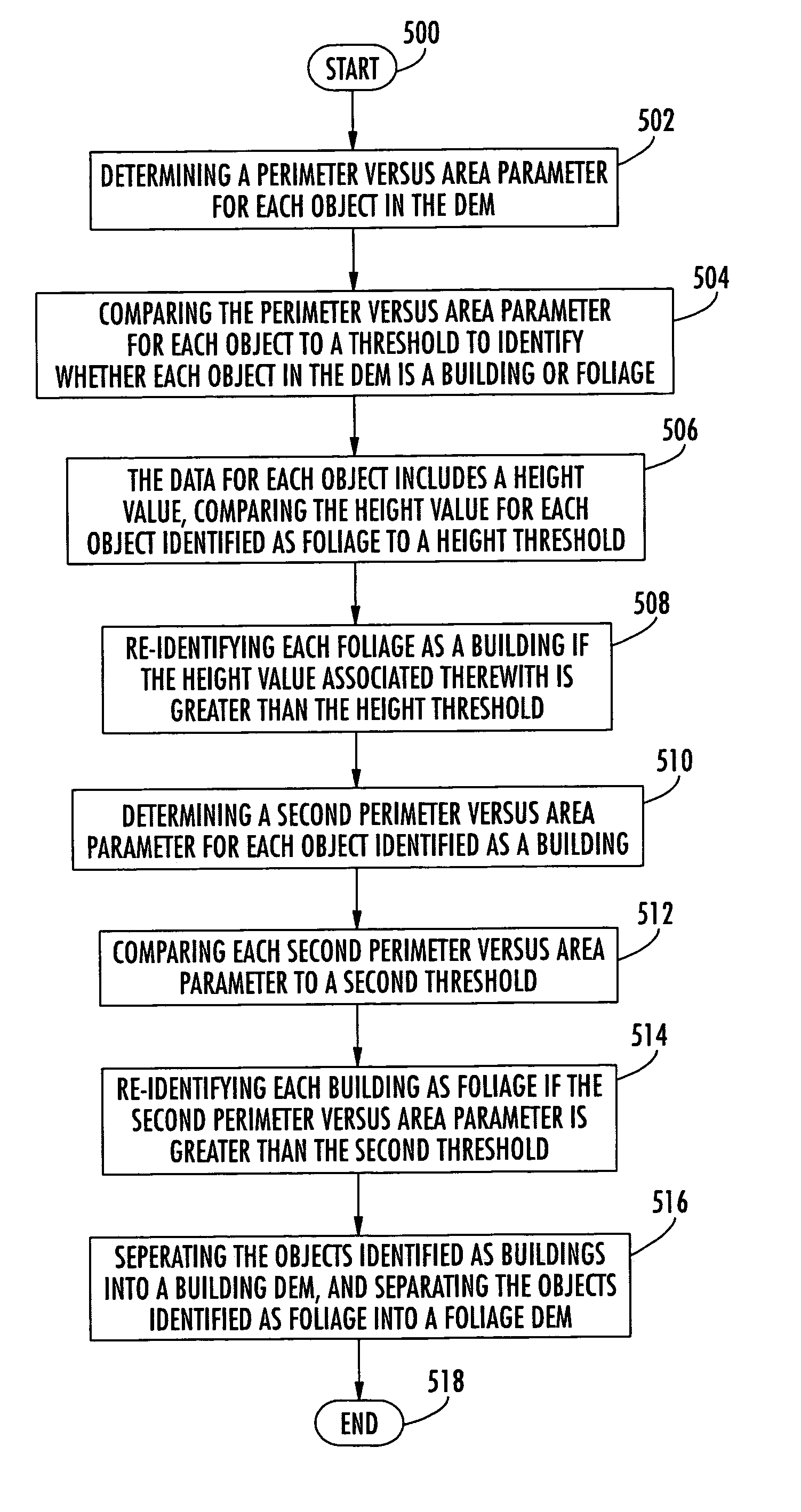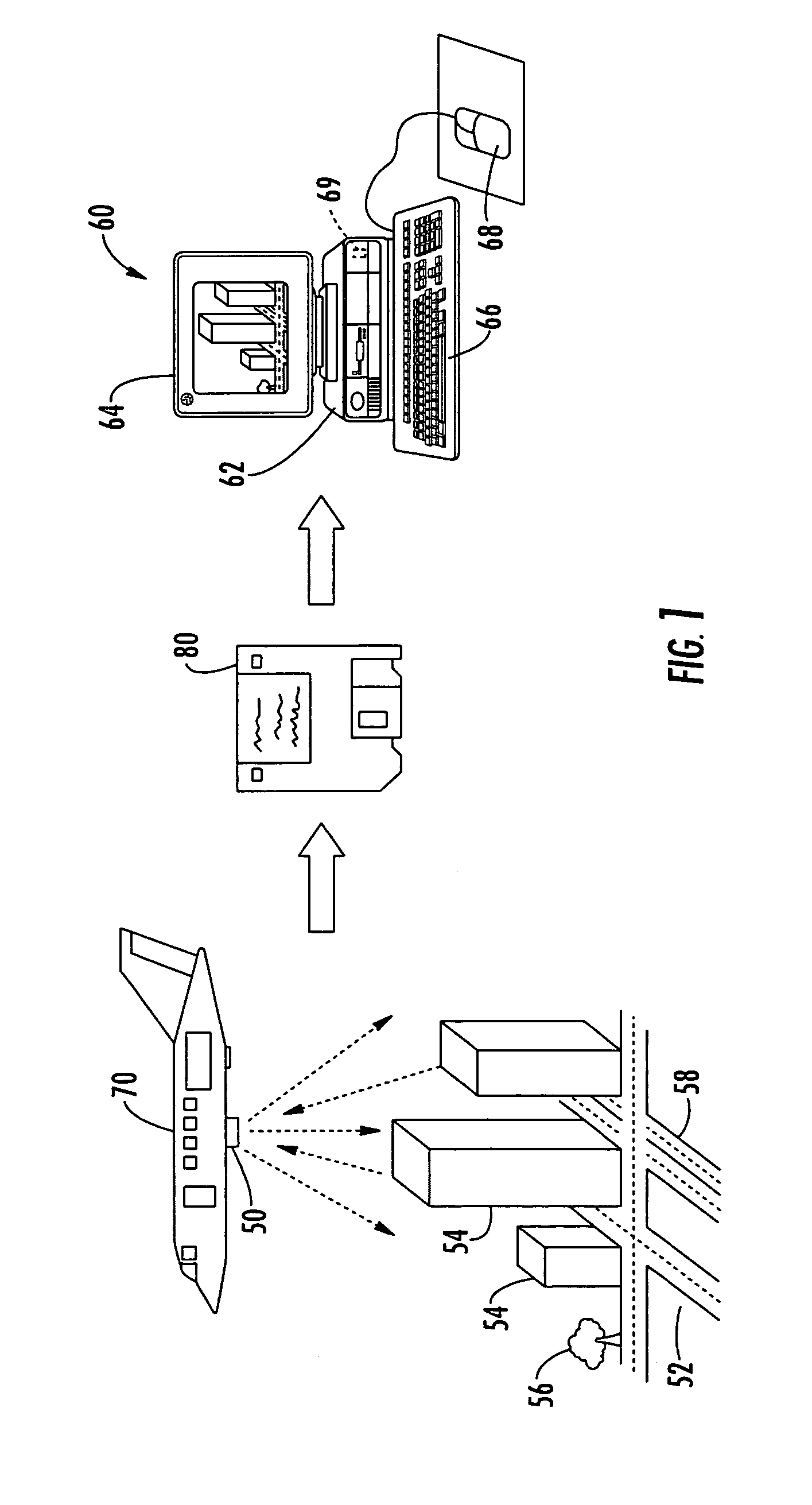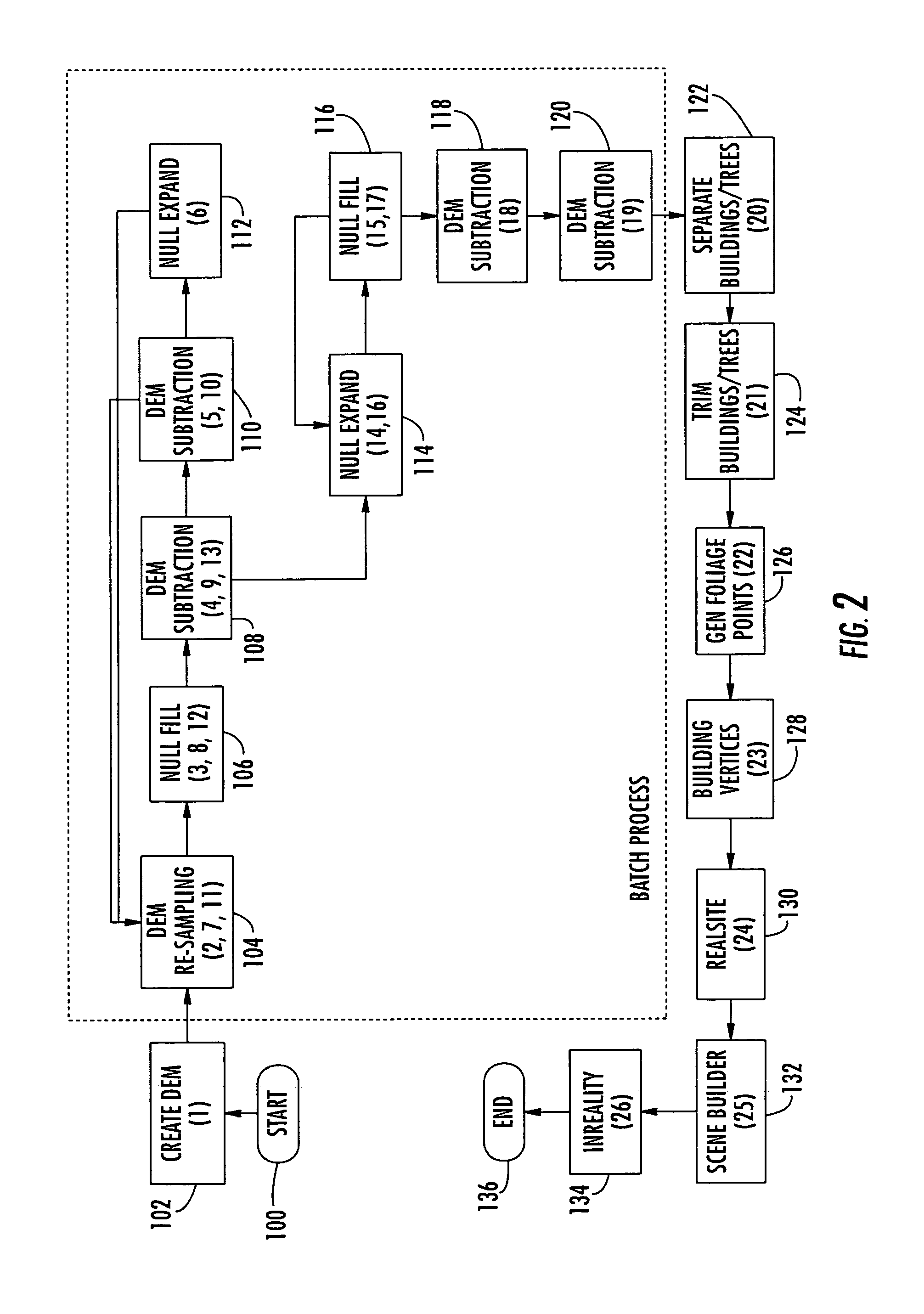Method and apparatus for distinguishing foliage from buildings for topographical modeling
a topographical modeling and foliage technology, applied in the field of topography, can solve the problems of large number of polygons, unreality of modeled foliage, and general unsuitability of dems for modeling man-made structures, and achieve the effect of less user intervention and more realistic topographical models
- Summary
- Abstract
- Description
- Claims
- Application Information
AI Technical Summary
Benefits of technology
Problems solved by technology
Method used
Image
Examples
Embodiment Construction
[0031]The present invention will now be described more fully hereinafter with reference to the accompanying drawings, in which preferred embodiments of the invention are shown. This invention may, however, be embodied in many different forms and should not be construed as limited to the embodiments set forth herein. Rather, these embodiments are provided so that this disclosure will be thorough and complete, and will fully convey the scope of the invention to those skilled in the art. Like numbers refer to like elements throughout.
[0032]A collector 50 for collecting topographical data and a system 60 for generating a digital elevation model (DEM) from the collected topographical data will now be explained with reference to FIG. 1. The DEM is of an area that includes terrain 52 and objects on the terrain, wherein the objects may be buildings 54 and foliage 56. The foliage 56 primarily includes trees, and consequently, foliage and trees will be interchangeable. Modeling of the terrain...
PUM
 Login to View More
Login to View More Abstract
Description
Claims
Application Information
 Login to View More
Login to View More - R&D
- Intellectual Property
- Life Sciences
- Materials
- Tech Scout
- Unparalleled Data Quality
- Higher Quality Content
- 60% Fewer Hallucinations
Browse by: Latest US Patents, China's latest patents, Technical Efficacy Thesaurus, Application Domain, Technology Topic, Popular Technical Reports.
© 2025 PatSnap. All rights reserved.Legal|Privacy policy|Modern Slavery Act Transparency Statement|Sitemap|About US| Contact US: help@patsnap.com



